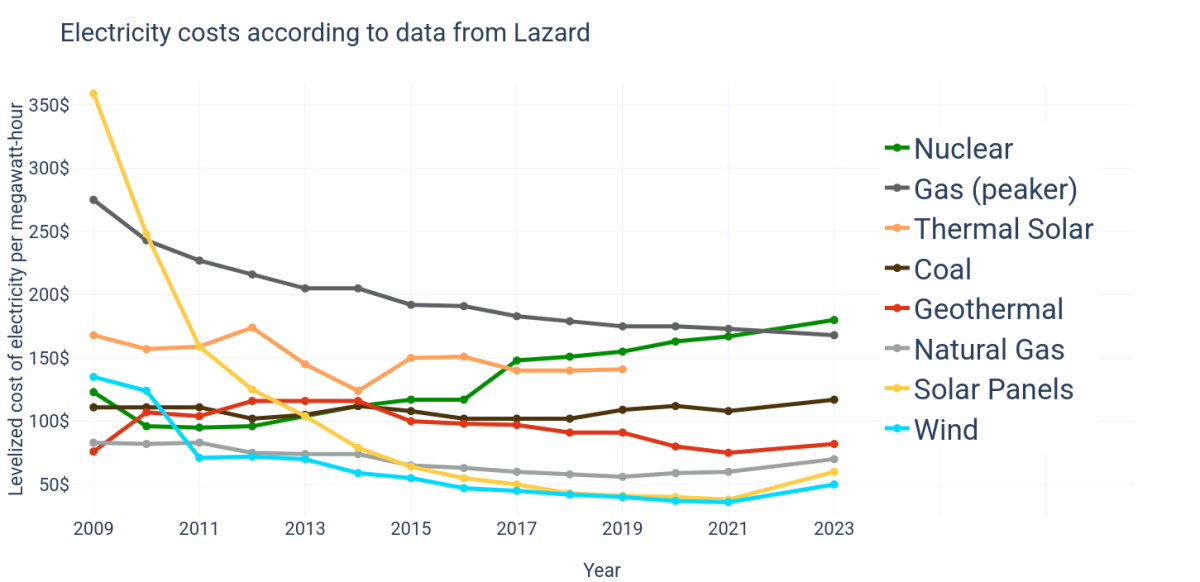PayPal’s green mining initiative makes absolutely no sense.

Last week, Paypal, in collaboration with Energy Web and DMG Blockchain Solutions, released a white paper outlining a “green mining initiative” to redirect participating users’ fees to certified miners, particularly those whose work is powered by renewable energy. To be honest, I can’t say this is surprising. Mining is now very normalized in terms of use for renewable energy or climate goals. Mining, by its very nature, is actually well-suited to this task, with miners being mercenaries looking for the cheapest energy they can devote to solving the next block. If you have stranded power or excessive power, they will take it.
But the overall architecture of this system is beyond the realm of Rube Goldberg. I’m amazed at the level of technical understanding and sophistication this holds from major companies like Paypal, and especially blockchain research groups that are specifically focused on this area. Everything is inefficient and nonsensical, and some of the end goals or possibilities they discuss are not built on sound economic incentives.
core design
The whole point of the design is to ensure that when compliant users broadcast transactions to the network, only certified green miners can collect the associated transaction fees. The problem is that mining fees from transactions can be collected from all miners included in the block, not just the authenticated miner. We need a mechanism to ensure that only certain miners can collect a few.
The first thing you need to do is identify miners who can charge limited fees. They propose utilizing a system called “Green Proof for Bitcoin” provided by Energy Web. Evidence is a certification by an organization that the miner’s energy mix or impact on the grid meets some threshold for renewable energy use or positive impact on the power grid. The authentication process allows each miner to register its public key, generating a list of the public keys of each authenticated miner.
This core certification is fundamental to ensuring that only the right miners can claim fees. A compliant user’s wallet can query or be provided with a list of all verified miners’ Bitcoin addresses, and from there they can get the information they need to create special transactions for which only they can charge fees. . The secret is multiple signal output. Since there is no hard limit on the number of keys that must be used to sign a multisig address, compliant users can use a 1-of-n multisig script that any authenticated miner can use, sending the fees to the authenticated miner to a special output. You can include: A minimum fee at the bottom of the mempool fee range has also traditionally been included to ensure propagation across the network.
The final piece of the puzzle is actually charging a fee. If a verified miner mines a block that contains green transactions and does not also include transactions that spend the fee output on themselves. any Verified miners can claim a fee output on the next block they mine. For each green transaction that a verified miner includes in his or her block, he or she must include that transaction sending a fee output to the address for which he or she holds the key.
Special wallets can create transactions with a fee output that can only be claimed by verified miners, and these users can prioritize fees to miners certified as using renewable energy or having other positive impacts on the grid. .
A thought full of holes and incomplete
First, the general idea of requiring miners to include their own second transaction is an incredibly inefficient design, and this is acknowledged in the paper. What they don’t acknowledge is the economic reality this implies for transaction fees.
Bitcoin transactions pay a fee based on the amount of space they take up in terms of data. By introducing the need for miners to create secondary transactions that take up block space and collect these “green fees”, we are economically increasing the scale of green transactions themselves. This is actually very similar to Child-Pays-For-Parent from an economic standpoint.
With CPFP, transactions that consume the output of unconfirmed transactions pay abnormally high fees. This increases the fees of the first transaction by averaging the fees paid by the first and second transactions, which must be confirmed before the second transaction can be confirmed. This green fee collection mechanism is the same but in reverse.
By assuming that the fee output pays the average fee and requiring the miner to create a second transaction to charge the fee, the net fee that the miner collects per byte of data is actually lowered. The blockspace needed to collect this can be used to include another fee-paying transaction. Therefore, in practice, the fees that compliant users charge to verified miners must also be paid on the miners’ billing transactions, which in effect means that compliant users have to pay more absolute fees to achieve a certain fee rate. means. Why do users do this?
In a vacuum, this dynamic would result in compliant users having to pay overages or certified miners reducing their profits, all things being equal in practice. The former is irrational from a consumer perspective, and the latter does not fully achieve the goal of providing additional revenue to miners using renewable energy.
The second glaring issue, and surprising one, is their idea of how to structure a 1-of-n multi-signature script. With traditional pre-tabroot multi-signatures, each individual key in the multi-signature must be present in the script. This causes a problem. For each miner holding a multisig key, the green fee output size increases linearly.
The plan presented in the white paper divides miners into subgroups and outlines which group will pay a fee for each transaction. This means that if you have 21 miners, they split into 3 groups of 7 and move on to the next group, sending them a fee every time they trade. Since the rate of transactions between compliant users and the rate of circulation between them is not something that can be prescribed or made regular, this results in a very irregular distribution of fees among all verified miners. Needless to say, there appears to be a complete lack of awareness of Schnorr-based multi-signature schemes like FROST.
Schnorr-based multi-signature scripts use aggregate keys. This means that regardless of the number of member keys involved, the script only needs a single public key and only a single signature. This completely solves the multi-signature script size problem and eliminates the noisy requirement to divide authenticated miners into subgroups.
They also don’t mention more efficient mechanisms for actually collecting fees. A single secondary transaction for each green transaction would be incredibly inefficient. not very A more efficient mechanism using blockspace is to remove all green transaction fee output from a single transaction. This would require only a single transaction output aggregating all fees into a single UTXO, rather than separate outputs for each individual fee and the need to later combine them with another transaction.
They finally discuss the potential of centralized out-of-band mechanisms directly to authenticated miners, but raise the complexity of centralizing, introducing trust, and implementing direct communication to each individual miner as reasons for designing the decentralized protocol described above.
the market is okay
In the end, the technical inefficiencies and inability to figure out (at least partially) blatantly obvious solutions aren’t even the most confusing parts to me. First, it is attempting to insert incentive-distorting dynamics into the enforcement layer of the protocol to address concerns about renewable energy. why? The market literally takes care of all of these incentives on its own.

Renewable energy is the cheapest energy, even considering the construction and operation costs of energy production facilities. A miner’s main concern is finding the lowest possible price for energy. Why would Paypal want to insert a strange system that offers users a distorted mechanism that limits fees to only certain miners and tries to introduce an overall distorted market mechanism into this picture? The market is already doing what you want. Renewable energy is cheap, and if you build more of it, miners will come and buy it, generating revenue to fund their operations (especially if they are disconnected from the grid to begin with and there are no other consumers).
The whole dynamic of Bitcoin fees is that it is a completely open market. any Miners can compete to earn fees. any It is transacted by including it in its own block. This entire dynamic is built to encourage maximum competition between miners, providing security and finality to network users. Attempts to introduce strange distortions like this proposal into the system destabilize the balance between competition and network security. Considering the market realities of the mining ecosystem, this is completely redundant..
Do you want Bitcoin mining to be a positive factor in encouraging and expanding renewable energy production? exorbitant! You’re already doing that, so you don’t need to change it. You don’t need a Rube Goldberg scheme to achieve that goal. The unique market-based competition mechanism between miners already does that.
I really don’t understand what Paypal, DMG and Energy Web are thinking here.
